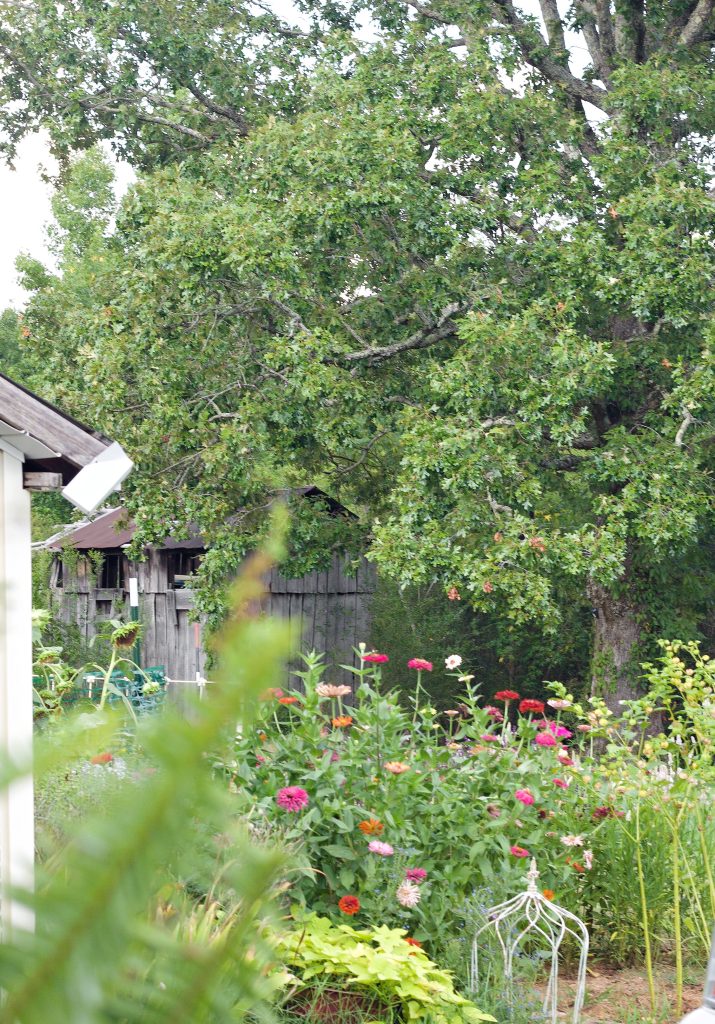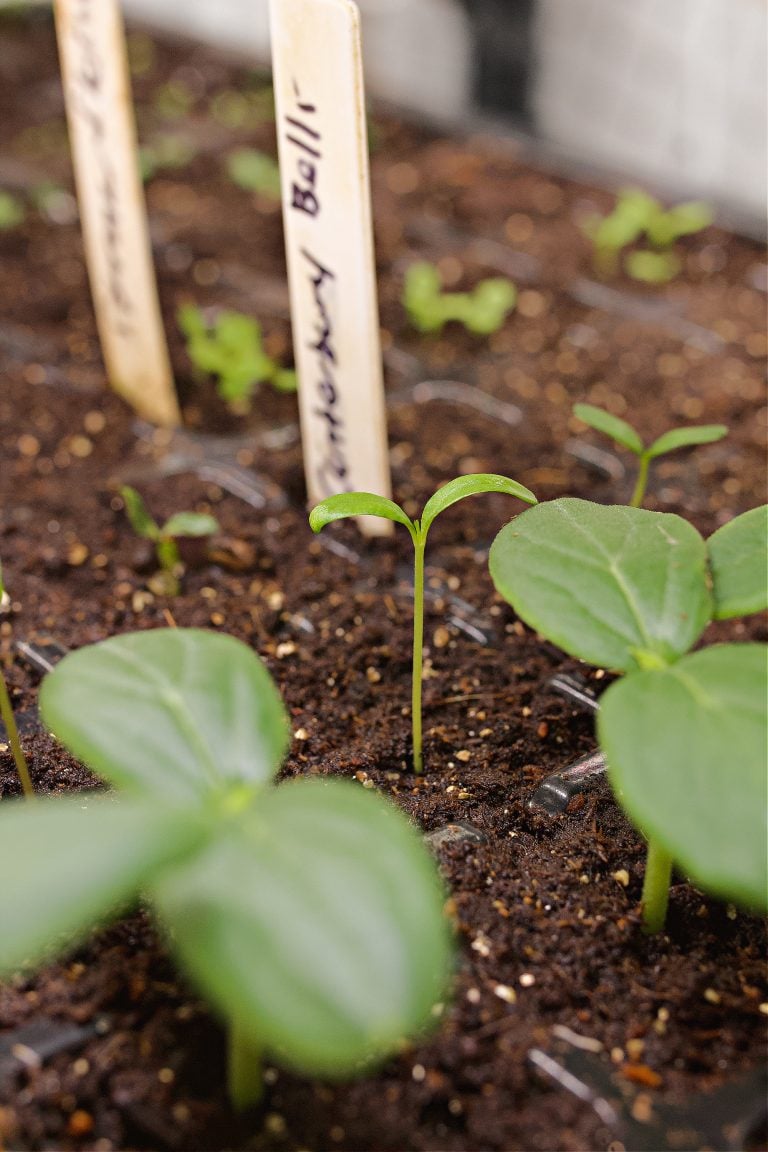Organic Gardening Basics: How to Care for Your Garden Naturally
When I started gardening, I knew chemicals had risks, so I avoided them for the most part. But every now and then, I’d make an exception—thinking a little couldn’t hurt. Over time, though, I learned that even small amounts could disrupt the balance of my garden. That’s when I committed fully to organic gardening.
In this post, I’ll show you how to grow organically—from preparing your soil to planting, maintaining your garden, and harvesting—all while creating a space that’s healthier for you and your soil.
Let’s get started!

Preparing the Soil:
The first step in organic gardening is preparing the soil. This will involve removing rocks and other debris, tilling the soil to aerate it, and adding organic compost and other soil amendments. (
Pro tip for tilling: The first time you till, try to do it when the ground in slightly damp, and not dry and compact. This allows you to work the soil up well. Once this is done allow it to dry, then come back through and till again. This helps you achieve a fine, flour like soil that’s perfect for little seedlings to pop up though.
You can till with a hand held tiller or, if you know a neighbor with a tractor and tiller, hire it out! This is a great way to get a large garden ready quickly in a very time effective way without breaking your back for hours and hours.
If tilling isn’t something you want/or can do, the other option available is the no dig method.

No dig gardening
No dig gardening is a method of gardening that avoids turning over the soil with a shovel or other digging implement. Instead, this method builds up the soil over a cardboard base with layers of organic matter such as compost, mulch, and manure.
This form of gardening has many benefits, including improved soil health, reduced water runoff, and fewer weeds. It also reduces the labor involved in maintaining the garden, making it a great option for those who are short on time.
The main downside to no dig gardening is that it can be time-consuming at the beginning. As it involves the layering of compost and other materials. Additionally, in general it takes a while for the soil to become optimized and for the garden to become established. Since you’ll be adding mulch and building up a soil base, there could be cost associated with brining in the soil and organic matter.

Different planting options:
- Containers
- Raised beds
- Tilling up a portion or a yard or field and planting traditional crop rows.
None of the different planting options above are better than the other. (Though there will be many opinions that say different.) The choice should solely be on what is best for you and your personal situation.
Soil should be tested to determine its pH level and nutrient levels before planting as this will help determine the type of plants that can be grown and the kind of fertilizer needed.
(Do as I say and not as I did here, because I planted first, and tested after. I’m a rebel like that. Or a glutton for punishment.)
Adding compost to the soil not only provides the plants with essential nutrients, but also helps to improve the soil structure by improving drainage and aeration.

Best organic fertilizers to use on veggies
- Compost
- Worm Castings
- Manure (cold manure can be put directly in beds. It comes from cows, goats, sheep, and llamas)
- Bone Meal
- Fish Emulsion
- Seaweed Extract
Once the soil has been prepared, it’s time to start planting.
Organic gardeners should choose organic, heirloom or hybrid (though hybrid plants cannot be used for seed saving) and open-pollinated seeds for their gardens, as these are more likely to be better suited to the local climate and soil. Nothing GMO (Genetically Modified) should be used.
To read my whole seed guide, click here.
Planting is ideally done in the early morning or evening, when the temperatures are cooler and the soil is moist. Mulching around the plants can help retain moisture and discourage weeds.
Maintaining the Plants and Preventing Weeds
Organic gardeners should be mindful of the weeds in their gardens, as they can compete with the plants for water and nutrients. Hand-pulling weeds is the most efficient and effective way to keep them under control. Mulching can also help, as it can prevent the germination of weed seeds. As the plants grow, they should be monitored for pests and disease, and organic solutions should be used to keep them under control.

Harvesting
Harvesting should be done when the fruits and vegetables are ripe and ready. Ideally, most produce should be picked in the early mornings before the heat of the day. To get the most nutrients from your fresh produce, consume, can, or freeze within the first three days.
Helping the honey bees
Organic gardening is vital to helping the honey bee population thrive. They’ve really taken a hit with the amount of pesticides being so frequently used.
Gardening in a clean way helps honey bees by providing them with a variety of plants and flowers to forage on. Avoiding the use of chemical fertilizers and pesticides create a safer habitat for bees. Additionally, organic gardeners establish a diverse range of flowers and plants that attract honey bees and other beneficial pollinators. This increases the number of pollinators in the area and helps support honey bee health and populations.
Side note: I LOVE this book for kids about bees. It’s full of such great info and the art is stunning.
Prepping the Beds for Winter
At the end of the gardening season, the beds should be prepped for winter. This involves removing any dead plants and debris, and adding mulch and compost to the soil.
If possible, cover crops should be planted to enrich the soil with nutrients and to help prevent weed growth. Next spring, simply till the cover crops back into the soil. Do not allow the crops to seed out.
To sum up organic gardening
Gardening is such a rewarding experience, but it does take a little preparation and understanding of the basics to get started. With just a bit of effort, you can create a vibrant, healthy space for your plants to grow and flourish.
Like anything new, there’s a bit of a learning curve, but don’t let that stop you! Find other gardeners who share your passion, ask lots of questions, and keep going. The first season is always the trickiest, but it gets easier—and more enjoyable—from there.
P.S. Follow me on Instagram for more gardening inspiration and tips, and don’t forget to check out my About Me page to learn more about our homestead life!
Check out these other posts!
Herbs to grow from seed for your spice rack






Growing your own food can be incredibly empowering! Learning about organic gardening methods is a great step towards a healthier lifestyle, thanks for sharing!